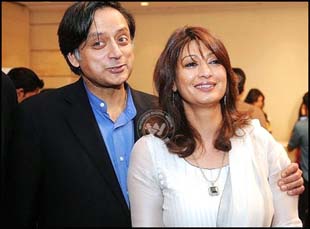 Delhi Police chief BS Bassi on Monday said the inquest would continue in the mysterious death of Sunanda Pushkar, Union minister Shashi Tharoor's wife while maintaining that there is "no reason" to proceed in any other way, virtually ruling out an FIR in the case as of now.
Delhi Police chief BS Bassi on Monday said the inquest would continue in the mysterious death of Sunanda Pushkar, Union minister Shashi Tharoor's wife while maintaining that there is "no reason" to proceed in any other way, virtually ruling out an FIR in the case as of now.
"From the circumstantial evidence collected so far and from the statement of witnesses, there is no reason for us to proceed in any other fashion so we are carrying on our inquiries under Section 174 CrPC," the police commissioner told reporters.
Inquest proceedings under Section 174 CrPC were initiated in the Sunanda case according to which a sub-divisional magistrate inquires into the death of a woman if she dies within seven years of her marriage.
In this case, on January 21, a sub-divisional magistrate had directed Delhi Police to investigate the murder or suicide angle in the case after autopsy report has cited the death as "sudden and unnatural" while the cause of death was mentioned as poisoning.
The police can file an FIR in this case if it finds any foul play but until then the inquiry will go on under section 174 CrPC.
Investigators were banking on the viscera report from CFSL to get definitive lead on the nature of the poison and establishing its quantity but the report has failed to do so. The viscera report hints toward drug poisoning and its findings are still inconclusive to file an FIR in the case, according to police.
"The CFSL report has not been able to give much headway into the probe. It rules out poisoning and hints toward drug poisoning," said a senior police official associated with the probe.
Sunanda, 52, was found dead in a 5-star hotel in South Delhi on the night of January 17, a day after her twitter spat with Pakistani journalist Mehr Tarar over an alleged affair with Tharoor.





Comments
Add new comment